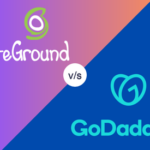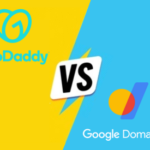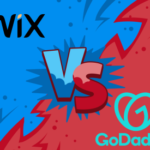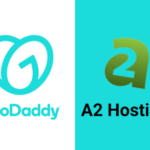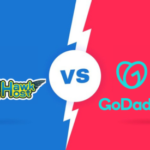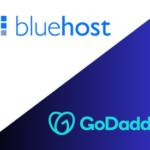We’ll evaluate whether DreamHost or GoDaddy is the superior hosting provider in this GoDaddy vs DreamHost comparison. We’ll discuss key features, cost, usability, performance, security, and customer service.
GoDaddy is one of the most famous brands/companies in the web hosting sector. Despite some negative press, this host’s performance and interface are now recognized as trustworthy and dependable. Focusing on speed, performance, and server response time becomes a priority if you want your website to load incredibly quickly. In that circumstance, you should select a quick web hosting provider that offers the best speed and performance.
Pricing and Plans
WordPress, Linux, WooCommerce, VPS, Cloud, and dedicated servers can all be hosted on shared servers by DreamHost. GoDaddy offers dedicated servers, resellers, VPS, and shared hosting for Windows and Linux, WordPress, and other platforms.
While DreamHost offers only two Linux-shared hosting plans, GoDaddy offers four Linux-shared hosting plans and three Windows ones.
Both GoDaddy and DreamHost offer free domains when purchasing any hosting package. Two shared plans are available from DreamHost, priced at $6.34 and $14.02, respectively. GoDaddy’s 4 plans range in price from $5.75 to $19.19. Each service provides monthly, yearly, or triennial billing options.
On DreamHost vs GoDaddy hosting services, money-back guarantees are available, although DreamHost’s is longer (97 days) than GoDaddy’s (30 days). Only DreamHost provides a free website migration service.
Features
You receive 50 GB to infinite SSD storage, 1 to unlimited hosted websites, and unlimited bandwidth with DreamHost’s two shared hosting plans (Starter and Unlimited). Email accounts are available for an extra fee.
A bespoke control panel, a free basic website builder, pre-installed WordPress, and automatic daily backups are also included with DreamHost’s shared hosting service. The Unlimited subscription also includes a free SSL certificate.
With GoDaddy’s Linux-based shared hosting plans, you get 100 GB to unlimited HDD storage, unlimited bandwidth, one free Office 365 email for the first year, one hosted website, and 10 to unlimited MySQL databases.
All plans have cPanel and a one-click application installer; however, only GoDaddy’s higher-tier plans include a free SSL certificate for the first year.
Ease of Use
GoDaddy and DreamHost take distinct approaches regarding user-friendliness, yet both aim for simplicity. GoDaddy employs the widely recognized cPanel interface, whereas DreamHost provides a fully customized control panel developed in-house.
Furthermore, when you first access your GoDaddy account, they ensure you install WordPress and acquire a functional domain. Once WordPress is set up, you can choose from premium templates through the GoDaddy Starter plugin and utilize a straightforward WordPress-based editor for customization.
Conversely, DreamHost’s control panel is unique. This dashboard contains management tools for domains, WordPress, email, and FTP. While navigating DreamHost’s panel may differ from most competitors, it becomes highly user-friendly with familiarity.
Performance
DreamHost operates solely from a server location in the United States, whereas GoDaddy extends its reach with servers in the USA and India. In terms of global server presence, GoDaddy holds a distinct advantage.
Both hosting providers primarily utilize HDD storage, reserving SSD storage for specific plans. SSD storage significantly enhances website data processing, positively impacting loading speeds and overall site performance.
Another performance-enhancing feature is the Content Delivery Network (CDN). CDNs boost website loading speeds worldwide by distributing content across a global network of cloud servers. Regrettably, DreamHost does not provide a complimentary CDN with any of its plans, while GoDaddy offers it exclusively with its WordPress hosting plans.
DreamHost pledges an ambitious 100% uptime guarantee, whereas GoDaddy offers a more realistic 99.9% uptime commitment. Despite occasional downtimes reported by both hosts, GoDaddy surpassed its promise, whereas DreamHost fell short of its overly optimistic guarantee.
Customer Support
GoDaddy’s customer support is slow and difficult to get your head around, but you can be sure your query will be addressed over time. Dreamhost, on the other hand, offers average customer support, and that’s okay, as their business/enterprise model appears to be focused on web hosting only.
Overall Thoughts
In this comparison of DreamHost vs GoDaddy, they both stand as industry benchmarks in the realm of website hosting. GoDaddy holds the crown in domain name registrations and recently enhanced its web hosting offerings. However, DreamHost is a formidable leader that’s hard to surpass when it comes to managed WordPress hosting.
DreamHost excels over GoDaddy if your website experiences continuous traffic growth. Their robust security measures, reliable backups, and comprehensive site management tools empower you to harmonize your website with your business’s expansion.





